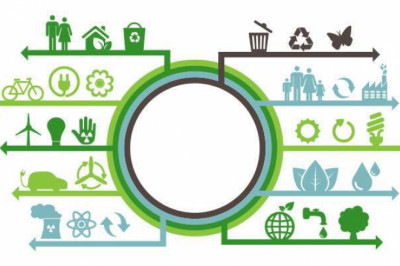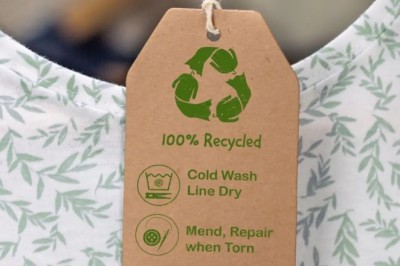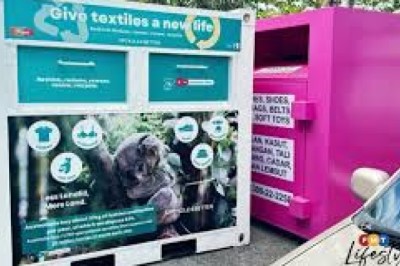views

Zero-Waste Wardrobe: Tips for Minimizing Fashion's Environmental Impact
In a world increasingly aware of environmental issues, the fashion industry stands out as one of the most significant contributors to pollution and waste. Fast fashion, characterized by its rapid production and disposal of clothing, has severe environmental consequences. From excessive water usage and chemical pollution to massive textile waste, the need for a more sustainable approach to fashion is critical. One effective way to address this is by adopting a zero-waste wardrobe. Here are several tips for minimizing fashion's environmental impact and creating a more sustainable wardrobe.
1. Understand the Impact
The first step toward a zero-waste wardrobe is understanding the environmental impact of fashion. The industry is responsible for approximately 10% of global carbon emissions and is the second-largest consumer of water worldwide. Additionally, the production of synthetic fibers, such as polyester, releases microplastics into the environment. By recognizing these issues, individuals can make more informed choices about their clothing consumption.
2. Buy Less, Choose Wisely
A fundamental principle of a zero-waste wardrobe is to buy less and choose wisely. This means investing in high-quality, timeless pieces that are versatile and durable. Instead of purchasing numerous trendy items that quickly go out of style, focus on building a wardrobe with classic pieces that can be mixed and matched. Quality over quantity ensures that your clothing lasts longer, reducing the need for frequent replacements and minimizing waste.
Also Read: Sustainable Style Icons: Celebrating Fashion's Ethical Trailblazers
3. Embrace Second-Hand Shopping
Thrifting and buying second-hand clothing are excellent ways to reduce waste. By purchasing pre-owned items, you give them a new life and prevent them from ending up in landfills. Thrift stores, consignment shops, and online platforms like Poshmark and Depop offer a wide range of second-hand clothing options. Additionally, vintage shopping not only promotes sustainability but also allows you to find unique, one-of-a-kind pieces.
4. Opt for Sustainable Materials
Choosing clothing made from sustainable materials is another crucial step in reducing fashion's environmental impact. Natural fibers such as organic cotton, linen, hemp, and bamboo are more environmentally friendly than synthetic fibers like polyester and nylon. Additionally, look for garments made from recycled materials, such as recycled polyester or reclaimed fabrics. Brands that prioritize sustainability often provide information about the materials they use and their sourcing practices.
5. Support Ethical Brands
Supporting brands that prioritize ethical and sustainable practices is essential for a zero-waste wardrobe. These brands are committed to fair labor practices, environmentally friendly production processes, and transparent supply chains. Researching and choosing to buy from such companies helps promote a more sustainable fashion industry. Look for certifications like Fair Trade, Global Organic Textile Standard (GOTS), and B Corp, which indicate a brand's commitment to ethical practices.
6. Care for Your Clothes
Proper care and maintenance of clothing can significantly extend its lifespan. Follow the care instructions on garment labels to avoid damage during washing and drying. Washing clothes in cold water, air-drying instead of using a dryer, and using gentle detergents can help preserve the fabric and reduce wear and tear. Additionally, learn basic repair skills, such as sewing on buttons and mending small tears, to keep your clothes in good condition for longer.
7. Upcycle and Repurpose
Upcycling and repurposing old clothing is a creative way to reduce waste. Instead of discarding worn-out or outdated garments, consider transforming them into something new. For example, old jeans can be turned into shorts, and a t-shirt can be repurposed into a tote bag. There are numerous DIY tutorials available online that provide inspiration and instructions for upcycling projects.
8. Organize Clothing Swaps
Organizing or participating in clothing swaps is a fun and sustainable way to refresh your wardrobe. Gather friends, family, or community members and exchange items you no longer wear. Clothing swaps allow you to update your wardrobe without buying new clothes and give your unwanted items a new home.
9. Recycle Textiles Properly
When clothing is beyond repair or repurposing, proper recycling is crucial. Many textiles can be recycled, but they should not be thrown into regular recycling bins. Look for textile recycling programs in your community or donate to organizations that accept worn-out clothing for recycling. Some fashion brands also offer take-back programs, where you can return old garments to be recycled into new products.
10. Mindful Consumption
Finally, adopting a mindful approach to consumption is key to a zero-waste wardrobe. Before making a purchase, ask yourself if you truly need the item and if it aligns with your values of sustainability. Practicing mindful consumption helps reduce impulse buying and encourages more thoughtful, intentional decisions.
Conclusion
Transitioning to a zero-waste wardrobe is a powerful way to minimize fashion's environmental impact. By understanding the issues, making informed choices, and adopting sustainable practices, individuals can contribute to a more sustainable future. Remember, every small step counts, and collectively, our efforts can drive significant change in the fashion industry. Embrace the journey toward a zero-waste wardrobe and enjoy the benefits of a more sustainable and conscious lifestyle.











Comments
0 comment